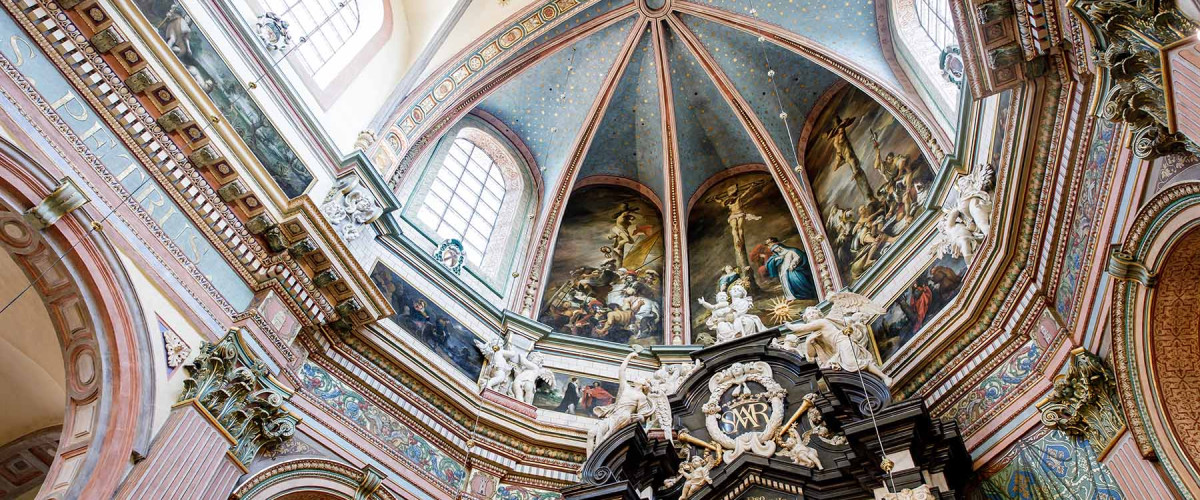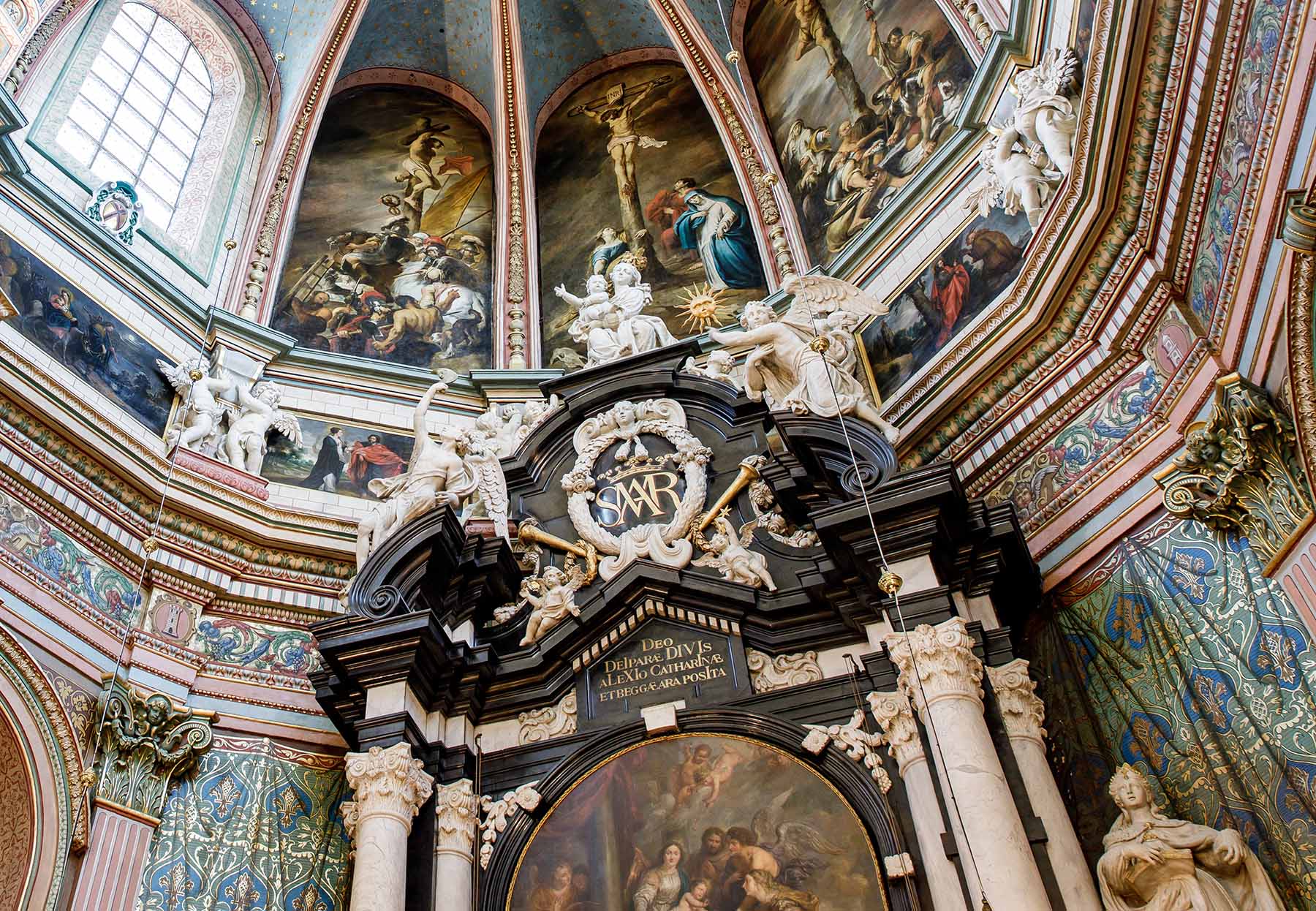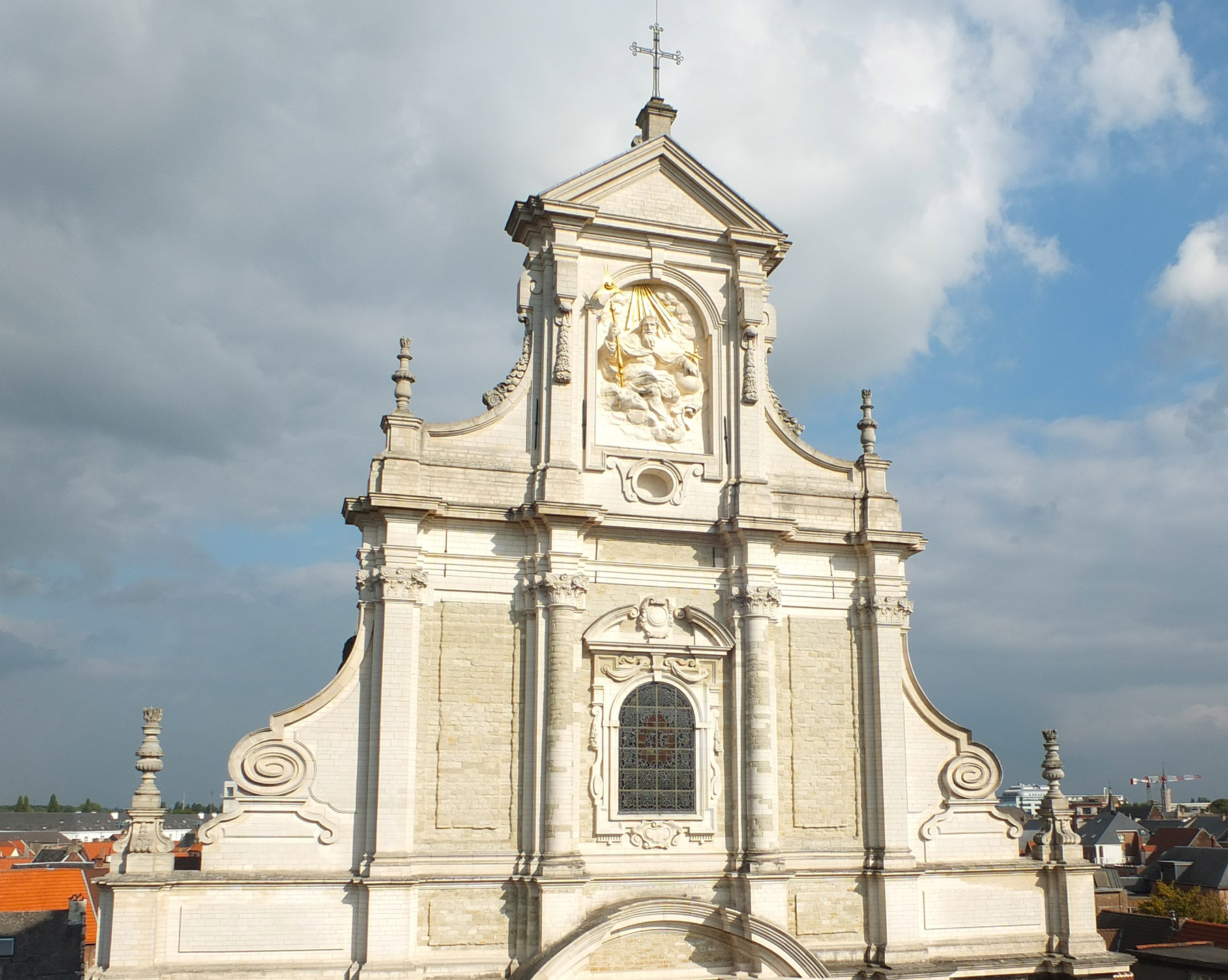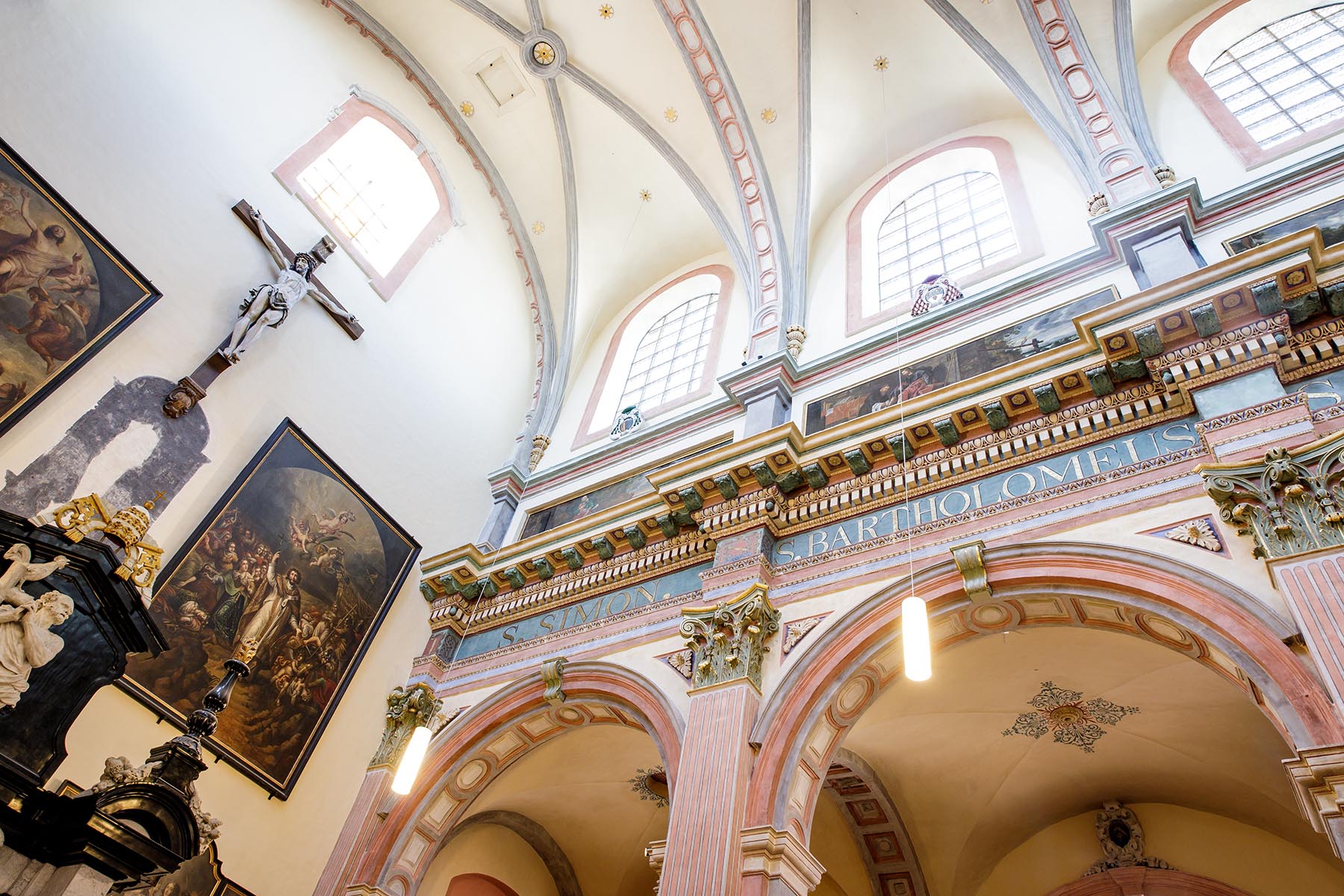The Baroque church of the beguinage of Mechelen is a gem, not only on the outside. Its interiors and rich collection of paintings, too, are well worth a visit.
Baroque architecture
Building work on the beguinage church of Mechelen began in 1629 and the church was consecrated some 18 years later in 1647. As the beguines of Mechelen were financially quite well off at the time, they could afford well-known architects to build exactly what they wanted, so they asked Jesuit Pieter Huyssens (1577-1637) and Jacques Franckaert the Elder (1550-1601) from Brussels, court architect to Archduke Albert VII of Austria and his wife Isabella of Spain, to draw the plans. Especially striking on the Baroque front façade is the statue of Saint Catherine by sculptor Lucas Faydherbe (1617-1697) from Mechelen. The latter was probably also responsible for part of the church’s interior. The beguinage church is a lovely combination of Italian-inspired and characteristic home-grown Flemish architectural features. The Italian influences come to the fore in the rhythm of the rounded arches, the Corinthian pillars and the imposing cornice.
High altar - Jan and Gaspard van den Steen
The black- and white-marble high altar was made by sculptors Jan and Gaspard van den Steen from Mechelen in 1671. Its peaceful-looking sculptures feature Mary at the centre surrounded by angels as she looks down tenderly upon the viewer holding the Baby Jesus who is sitting on her lap. They are supported by Corinthian columns, clearly recognisable because of their acanthus leaves at the top. On either side of the altar, we can see Saint Alexius of Rome and Saint Catherine of Alexandria, the patron saints of the church.
The Assumption of Mary by Lucas Franchoys the Younger - The Mystic Marriage of Saint Catherine of Alexandria by Theodor Boeijermans
Two very special 17th-century paintings are part of the high altar. They were niftily installed back-to-back so they could be turned round depending on the period of the year. The Assumption of Mary by Lucas Franchoys the Younger (1616-1681) is always on display from 15 August, as this is the date on which Mary’s acceptance into Heaven is celebrated. The church was built when the Counter-Reformation, the answer to the Protestant Reformation, was in full swing, so the veneration of Mary was being intensely promoted at the time to fend off the evil Protestants. At the end of November, the painting is turned to reveal Boeijermans’s work, which depicts Saint Catherine, one of the patron saints of the church. The painting shows Saint Catherine entering her mystic marriage with Christ, a legend that emerged in 1337.
Practical information
Disabled access
- Partially accessible for the disabled.



